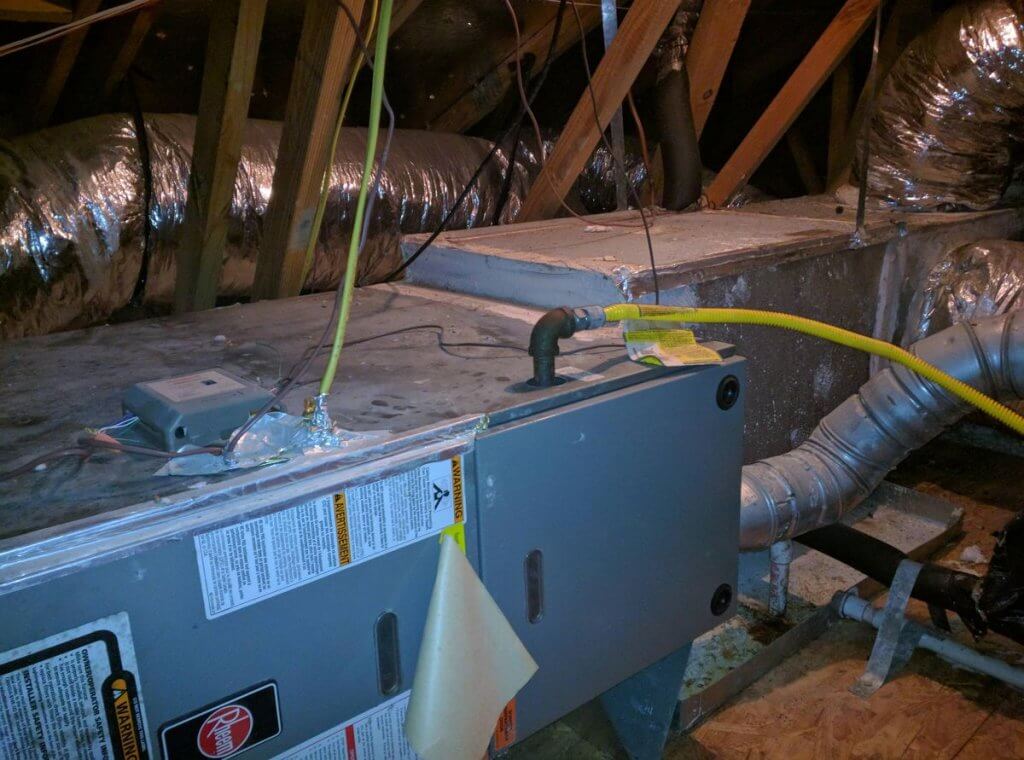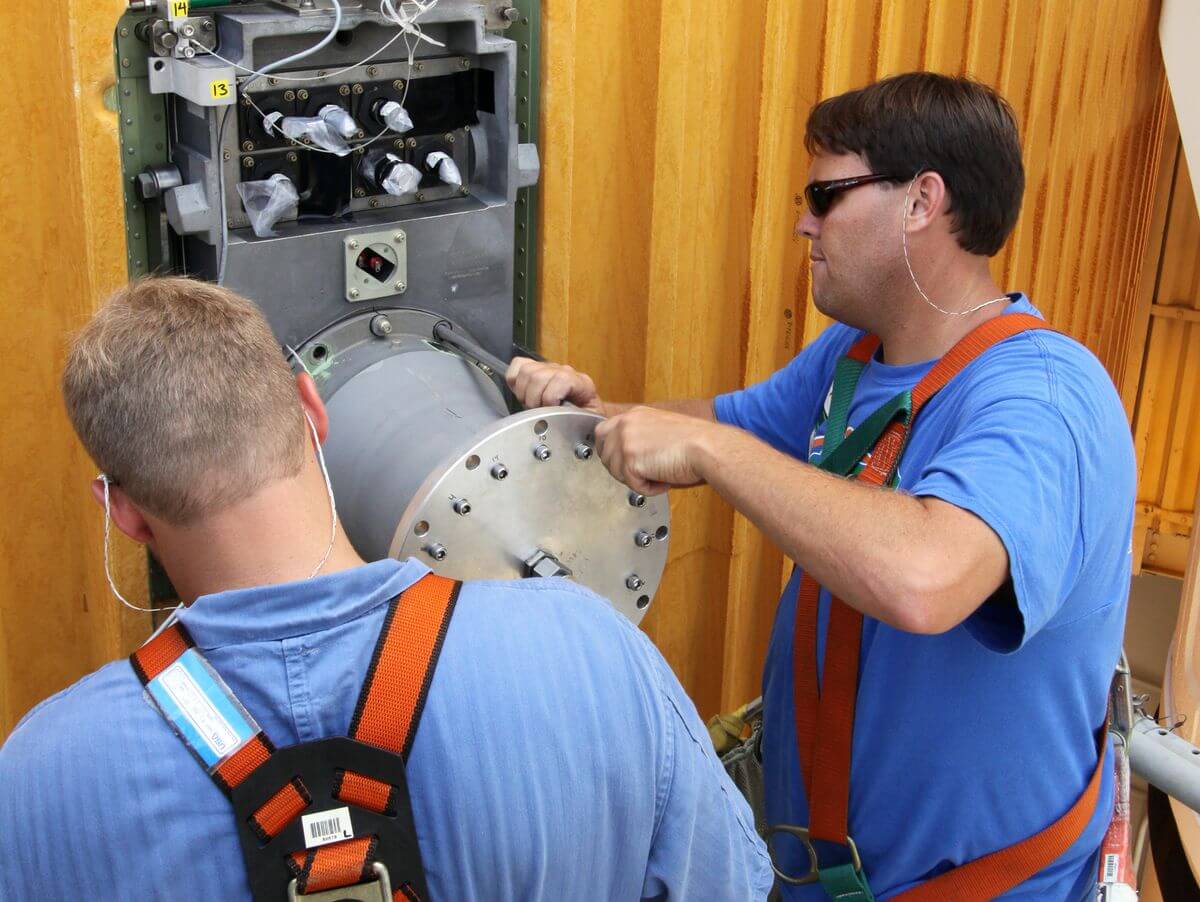The integration of workflow automation into field service operations for industries such as HVAC, solar, and medical equipment is a game-changer. By leveraging AI-driven workflow automation, these sectors can experience unprecedented improvements in efficiency, safety, and sustainability. This article explores how AI and machine learning can streamline operations, enhance field service efficiency, and contribute to sustainable construction practices, all while optimizing resource management for maximum productivity.

Key Takeaways
- Workflow automation significantly enhances project scheduling, safety protocols, and real-time data tracking, leading to more efficient field service operations.
- Automation-as-a-Service models, such as Denali’s, are providing comprehensive solutions that enable businesses to seamlessly integrate automation into their operations.
- AI technologies play a crucial role in promoting sustainability and compliance in construction, from forecasting environmental impacts to achieving green building certifications.
- Construction robotics, including AI-enabled drones, are revolutionizing on-site operations by improving precision, speed, and safety during the construction process.
- Optimized resource management through AI leads to reduced material waste, improved labor safety, and increased resilience against disasters, thereby boosting overall productivity.
Streamlining Operations with Workflow Automation

Machine Learning in Project Scheduling
The integration of machine learning into project scheduling marks a significant leap forward in field service operations. Smart scheduling techniques, driven by advanced algorithms and real-time data analysis, not only optimize field service operations but also improve customer satisfaction and enhance service delivery efficiency.
- FieldAx FSM Software streamlines field service scheduling, improving technician productivity and efficiency for increased customer satisfaction.
- Scheduling and dispatching automate field service management, optimizing technician schedules and enhancing customer service.
- Predictive maintenance and scheduling optimization, powered by AI, lead to cost savings and improved service outcomes, enhancing workforce productivity.
The dynamic scheduling enabled by machine learning facilitates accurate deadline predictions, managing client expectations, and coordinating with subcontractors effectively.
By analyzing datasets such as weather patterns, workforce productivity, and supply chain logistics, AI predicts potential delays and dynamically adjusts project schedules. This preemptive reallocation of resources and rescheduling of tasks ensures that deviations are corrected promptly, maintaining the project’s momentum.
Optimizing Safety Protocols with Machine Learning
The integration of machine learning with on-site sensors and wearables is revolutionizing safety protocols in field service operations. By continuously monitoring worker health and fatigue levels, these intelligent systems can preemptively alert supervisors to potential risks, allowing for swift intervention to prevent accidents.
- Real-time hazard detection and prevention
- Proactive health monitoring
- Incident analysis and response optimization
This proactive approach to safety, powered by machine learning, is shifting the industry from a reactive to a preventative stance, significantly reducing work-related injuries and fatalities. Moreover, predictive analytics employed in risk management enable strategic planning and resource allocation, ensuring safety and compliance while optimizing cost management.
Machine learning algorithms, by analyzing data from past incidents, provide invaluable insights into risk patterns. This data-driven strategy empowers construction managers to implement precise safety measures and conduct focused training, tailored to mitigate identified risks.
Leveraging AI for Real-Time Data Capture and Progress Tracking
The advent of AI in field service operations has brought about a paradigm shift in how data is captured and utilized. Real-time data capture facilitated by AI is not just about gathering information; it’s about transforming it into actionable insights that drive efficiency. For instance, in the HVAC industry, FieldAx’s field service software is a game-changer, enhancing productivity and customer service by streamlining workflow for technicians.
- Sensors placed on-site provide a continuous data stream, enabling project managers to make informed decisions swiftly.
- AI analytics predict potential issues, allowing for preemptive solutions that save resources.
- Post-construction, AI continues to monitor building performance, offering insights for future projects.
By harnessing the power of AI for real-time data tracking, companies can transition from reactive to proactive project management, optimizing operations and ensuring superior outcomes.
The integration of AI into field service operations, such as those provided by FieldAx, not only streamlines tasks but also ensures compliance with industry standards, such as FDA regulations in the medical equipment sector. This level of oversight and efficiency is crucial for maintaining high standards of customer service and operational excellence..
See how FieldAx can transform your Field Operations.
Try it today! Book Demo
You are one click away from your customized FieldAx Demo!
Enhancing Field Service Efficiency through Automation-as-a-Service
Denali’s Approach to Service-Led Automation Solutions
Denali Advanced Integration has taken a bold step forward with its Automation-as-a-Service (AaaS) offerings, aiming to redefine how enterprises approach automation. This service-led model ensures that businesses can access a comprehensive suite of automation tools without the need for significant upfront investment.
- End-to-end automation services are now within reach for companies across various sectors, thanks to Denali’s scalable solutions.
- The focus on partnership and support is central to Denali’s philosophy, providing clients with not just tools, but also the expertise to implement them effectively.
Denali’s AaaS portfolio is designed to be adaptive, catering to the unique needs of each enterprise, and is a testament to their commitment to driving efficiency and innovation in the field of automation.
By leveraging Denali’s AaaS, organizations are empowered to streamline their operations, enhance productivity, and ultimately achieve a higher level of customer satisfaction.
Collaboration Agreements to Expand Generative AI Solutions
The integration of generative AI into field service operations marks a transformative step for industries like HVAC, solar, and medical equipment. By entering into strategic collaboration agreements, companies can leverage the strengths of AI to not only design and plan projects but also to enhance the execution and management of field services.
- FieldAx’s presence at Acrex 2024 underscores the potential of AI in revolutionizing the HVAC industry, with its comprehensive solutions that include Estimations, Dispatching, Scheduling, and more.
- The synergy between AI and field service management is evident in the way FieldAx utilizes advanced scheduling algorithms to optimize operations, thereby reducing travel time and increasing customer satisfaction.
The future of field service management is being reshaped by AI, with platforms like FieldAx offering an end-to-end solution that transforms the entire field service management experience.
These partnerships are not just about adopting new technologies; they are about creating a unified platform that brings together collaboration and analytics apps for team tasks, ensuring that every aspect of field service management is enhanced for better efficiency and growth.
Unchained Robotics: Simplifying Automation in Factories
Unchained Robotics is at the forefront of transforming factory operations by providing plug-and-play automation solutions that are simple and transparent. Their approach is particularly beneficial for small and medium-sized enterprises (SMEs) that may find the entry barrier to automation technology too high. By offering systems that can be implemented within hours, Unchained Robotics is making significant strides in democratizing industrial automation.
The Role of Workflow Automation to Improve Field Service Businesses is evident in the way Unchained Robotics’ solutions free human labor for more complex tasks. This shift not only enhances efficiency but also allows workers to engage in work that requires critical thinking and craftsmanship. As a result, businesses in the HVAC, solar, and medical equipment industries can expect a more skilled workforce and improved service delivery.
- Reduction of physical strain on workers
- Freeing human labor for complex tasks
- Rapid implementation of automation
The integration of robotics into factory workflows is revolutionizing the field service industry, offering unprecedented levels of precision and efficiency. By automating tasks that are labor-intensive or require high consistency, such as metalworking or logistics, Unchained Robotics is not only expediting processes but also ensuring higher quality outcomes.
Sustainability and Compliance in Construction: The AI Advantage

Environmental Impact and Sustainability Forecasting
The predictive power of AI in sustainability forecasting is a game-changer for the construction industry. It enables a proactive rather than reactive approach to environmental responsibility. By forecasting future trends and regulations, AI positions construction projects to be sustainable not just at the point of completion but for many years thereafter. This forward-thinking methodology ensures that projects undertaken today remain in harmony with the environment for generations, setting a new standard.
Sustainable construction is not just about the present but also the future. AI can predict the long-term environmental impact of construction decisions, helping stakeholders understand how their choices will affect the building’s carbon footprint over time. This long-term perspective is crucial for creating structures that are not just sustainable today but will continue to meet strict environmental standards in the years to come.
AI’s forecasting capabilities extend beyond immediate environmental impacts, offering insights into the long-term consequences of construction projects. It meticulously analyzes factors such as energy consumption, waste generation, and the carbon footprint associated with different materials. This comprehensive assessment helps in understanding the prolonged environmental effects that construction projects may harbor. Consequently, AI equips construction firms with the foresight needed to not only adhere to current sustainability practices but also to anticipate and prepare for future challenges.
Enhanced Energy Efficiency in Construction Processes
The integration of AI in construction not only streamlines operations but also significantly boosts energy efficiency. By optimizing the scheduling of energy-intensive tasks, AI ensures that machinery is used during off-peak hours, reducing energy consumption and operational costs.
- AI-systems manage energy use to avoid peak periods
- Intelligent design integrates sustainable energy practices
- Smart systems installed during construction manage post-construction energy consumption
AI’s predictive capabilities extend to logistics, where it can minimize the carbon footprint by optimizing material transport routes and promoting the use of local resources. This approach not only supports environmental sustainability but also aligns with the values of stakeholders prioritizing green initiatives.
The foresight in implementing AI from the outset paves the way for a future where buildings are not just constructed but are born with sustainability at their core.
Green Building Certification and AI
Achieving green building certifications such as LEED, BREEAM, or WELL is a testament to a project’s commitment to sustainability. AI’s role in this process is transformative, providing a data-driven pathway to ensure that sustainability metrics are not only met but optimized from the outset. By analyzing and guiding project teams, AI-driven recommendations can lead to practices that contribute to both certification and environmental stewardship.
- AI systems keep teams informed about the latest sustainability standards, adapting to the ever-evolving benchmarks.
- Strategic planning through AI simulations can target the highest certification levels, enhancing market value and reducing operational costs.
- Accurate tracking of sustainability metrics by AI ensures that certification documentation truly reflects the building’s environmental impact.
Sustainable construction is about foresight. AI’s predictive capabilities allow stakeholders to understand the long-term environmental impact of their construction decisions, ensuring that today’s green buildings continue to meet the environmental standards of tomorrow.
Revolutionizing On-Site Operations with Construction Robotics
Construction Robotics Transforming On-Site Work
The integration of robotic systems in construction is a game-changer, enabling projects to proceed with unprecedented precision and efficiency. These advanced machines are designed to adapt to the dynamic conditions of construction sites, leading to enhanced productivity and reduced labor costs.
- Robotic arms, for instance, lay bricks with remarkable accuracy, reducing material waste and speeding up the construction process.
- Robots also take on high-risk tasks, improving worker safety by handling dangerous jobs like demolition.
The data generated by these robots not only streamlines current projects but also serves as a valuable resource for future workforce training, ensuring that human workers are skilled in the latest construction technologies.
The advent of construction robotics marks a significant leap forward in how we approach building, offering a blend of safety, efficiency, and precision that was once unattainable.
Enhancing Precision and Speed with AI Robotics
The integration of AI robotics into construction sites has revolutionized the way tasks are executed, bringing about a new era of efficiency. Robotic arms, now a common sight, perform tasks with a level of precision that far surpasses human capabilities. This has led to a substantial increase in the speed of construction activities, from laying bricks to welding joints, while also minimizing errors and material waste.
- Robotic systems adapt to material variations, optimizing their operations in real time.
- Continuous data collection allows for ongoing performance analysis, leading to consistent improvements.
- The ability to learn from past actions enables these robots to enhance their precision and efficiency over time.
The use of AI in robotics is not just about automating tasks; it’s about creating a self-improving system that elevates the quality of work while reducing the time required to complete it. This is particularly beneficial in industries where time and accuracy are of the essence, such as HVAC, solar panel installations, and medical equipment maintenance.
As these intelligent machines take on more of the routine and physically demanding tasks, human workers are freed to focus on complex problem-solving and quality control, further optimizing the workflow and ensuring that safety remains a top priority.
Revolutionizing Site Inspections with AI-Enabled Drones
The advent of AI-enabled drones has transformed the landscape of construction site inspections. These advanced aerial vehicles, equipped with sophisticated cameras and AI algorithms, offer a bird’s-eye view of ongoing projects, capturing intricate details that enhance monitoring and management efforts.
Drones excel in surveying hard-to-reach areas, such as towering structures and expansive bridges, facilitating more frequent and safer inspections. This capability is crucial for both the maintenance of existing infrastructure and the assurance of quality in new constructions.
AI-driven image analysis further empowers drones to not only capture but also interpret site imagery. They can autonomously detect structural irregularities, potential safety hazards, and deviations from planned progress. The immediate availability of this data creates a real-time feedback mechanism, allowing for swift action to rectify any identified issues, thereby bolstering safety and operational efficiency.
The utilization of drones for site inspections is a game-changer, offering unparalleled perspectives and insights that drive smarter, safer, and more efficient construction practices.
Optimizing Resource Management for Maximum Productivity

Optimized Material Utilization and Waste Reduction
In the quest for efficiency, optimized material utilization stands at the forefront of sustainable construction. AI-driven systems are pivotal in ensuring that resources are maximized while waste is kept to a minimum. This not only curtails unnecessary expenditure but also plays a crucial role in diminishing the environmental footprint of construction activities.
- AI analyzes environmental data and construction methods to pinpoint optimal material usage.
- It identifies cost-saving opportunities and reduces the ecological impact.
In the realm of waste management, AI’s capabilities extend to enhancing recycling processes. It discerns which materials can be recycled or repurposed, promoting a shift towards a circular economy. This approach keeps materials in circulation longer, optimizing their value and reducing landfill contributions.
By leveraging AI, the construction industry can achieve a balance between economic and environmental objectives, ensuring sustainable growth and compliance with regulatory standards.
Workforce Optimization and Labor Safety
In the quest for peak operational efficiency, workforce optimization and labor safety are paramount. By leveraging advanced technologies, companies can ensure that the right number of workers with the right skills are on site at the right times, streamlining operations and enhancing productivity.
- Real-time monitoring of health and fatigue levels through AI-integrated sensors and wearables can preemptively alert supervisors to potential risks, fostering a culture of prevention.
- Strategic planning and resource allocation become more precise, leading to better timeline management and safety assurance.
Machine learning not only enhances protection but also reduces work-related injuries and fatalities by shifting the focus from reaction to prevention.
Predictive analytics and continuous learning evolve safety measures, while behavioral analysis ensures compliance. This holistic approach to workforce management not only safeguards employees but also drives cost savings and customer satisfaction.
Disaster Preparedness and Material Resilience
In the realm of field service operations, disaster preparedness and material resilience are paramount for ensuring continuity and safety. AI predictive analytics serve as a linchpin in this domain, offering foresight into potential vulnerabilities by analyzing historical data and environmental conditions. This proactive approach allows for the selection of materials that are not only cost-effective but also robust enough to withstand unforeseen events, thereby safeguarding the integrity of projects.
- AI predictive analytics forecast the likelihood of extreme weather and other disasters.
- Risk-adjusted planning allocates resources to mitigate high-probability risks.
- Material optimization contributes to the project’s safety, sustainability, and longevity.
By integrating AI into disaster preparedness strategies, construction managers can anticipate and prepare for a range of scenarios, ensuring that operations are not only efficient but also resilient in the face of adversity.
In today’s competitive business landscape, optimizing resource management is key to unlocking maximum productivity. Our comprehensive suite of tools, including Custom Job Estimates, Inventory Management, and Customized Field Job Management, empowers your office and field service teams to perform at their best. Elevate your operations and harness the full potential of your resources with our tailored solutions. Visit our website now to explore all features and take the first step towards operational excellence.
Frequently Asked Questions
How Does Workflow Automation Improve Field Service Businesses, Such as HVAC, Solar Installation, and Medical Equipment Companies?
Workflow automation leverages AI to anticipate project requirements, identify potential bottlenecks, and optimize scheduling with remarkable precision. This results in streamlined operations from material procurement to workforce allocation, minimizing waste, and maximizing productivity. It enables data-driven decision-making for efficiency and profitability.
What Are Some Key Areas Where AI Contributes to Construction Efficiency?
AI contributes to construction efficiency in several key areas including Timeline Management and Scheduling, Safety and Compliance Assurance, Workforce Optimization and Labor Safety, Environmental Impact and Sustainability Forecasting, Disaster Preparedness and Material Resilience, and Enhanced Energy Efficiency in Construction Processes.
How Does AI Enhance Energy Efficiency During Construction Processes?
AI improves energy efficiency by intelligently scheduling and automating energy-intensive tasks. It can manage machinery usage to avoid peak energy periods, leading to reduced energy consumption and costs, thereby promoting sustainable construction practices.
What Is Automation-as-a-Service (AaaS) and How Is Denali Involved?
Automation-as-a-Service (AaaS) is a service model where enterprises can access automation solutions and services end-to-end. Denali Advanced Integration offers an AaaS portfolio that provides comprehensive automation services to support enterprises globally.
How Is Machine Learning Transforming Project Scheduling and Safety Protocols?
Machine learning algorithms process historical data and real-time inputs to improve project scheduling and identify safety risks. This leads to more efficient timelines, reduced workplace hazards, and enhanced safety protocols through predictive maintenance and real-time hazard detection.
What Are the Advantages of Using Construction Robotics and AI-Enabled Drones On-Site?
Construction robotics and AI-enabled drones transform on-site work by enhancing precision, speed, and safety. They reduce the need for human labor in hazardous tasks, provide real-time data capture, and enable efficient site inspections, ultimately revolutionizing the construction industry.
Conclusion
The integration of workflow automation into field service operations across HVAC, solar, and medical equipment industries signifies a transformative leap towards efficiency and sustainability. By leveraging AI and machine learning, these sectors can anticipate needs, streamline processes, and enhance energy efficiency, all while ensuring safety and compliance. The future of field service is undeniably intertwined with the adoption of such intelligent systems, which not only optimize resource allocation but also pave the way for innovative practices. As we have seen with companies like Denali and ABB, the move towards automation-as-a-service and advanced management systems is already underway, promising a more resilient, productive, and sustainable industry landscape.
Author Bio
Co-Founder & CMO at Merfantz Technologies Pvt Ltd | Marketing Manager for FieldAx Field Service Software | Salesforce All-Star Ranger and Community Contributor | Salesforce Content Creation for Knowledge Sharing






